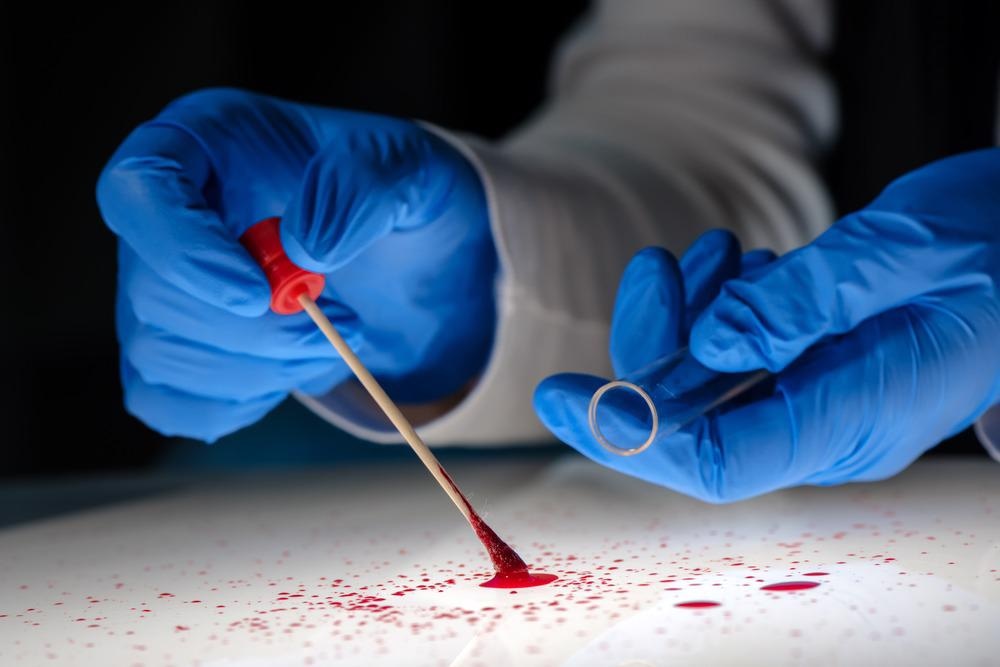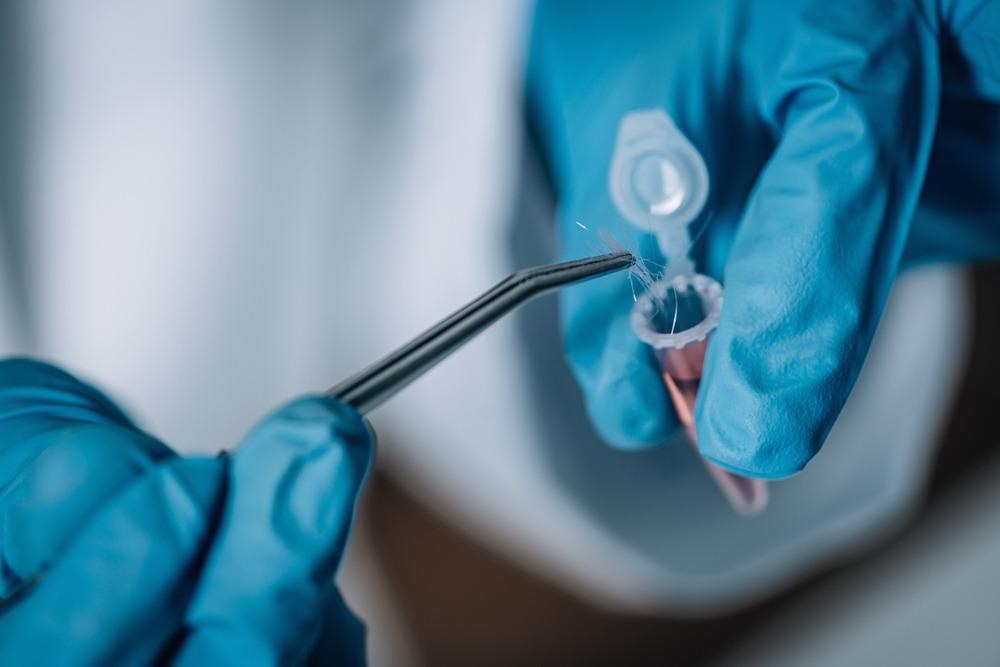Proteomics is an emerging field of science that leverages information from the proteome to tell us about the genetic sequence. Already, proteomic technology has helped to make significant advancements in medical science – in biomarker discovery and pathogenetic studies including tumor metastasis, for example.

Forensic science. Image Credit: Bits And Splits/Shutterstock.com
Proteomics is also being leveraged in the field of forensic science, where advancements achieved in the life sciences are being adapted to solve forensic challenges. There are numerous scenarios in forensics where proteomics can provide more information than DNA analysis can. Therefore, proteomics is becoming increasingly relied upon.
Here, we outline what proteomics is in relation to forensic science, how it is being utilized in this field, and what we might expect in the future.
The History of Protein Use in Forensic Science
The investigation of crime scenes heavily relies on the analysis of human evidence left at the scene, such as bodily fluids (particularly semen and blood), hair, bones, and other tissue. Analysis of such evidence can help investigators to establish forensic context, identify or rule out suspects or victims, develop timelines of a crime and visualize the chain of events as they occurred. Much scientific research has been dedicated to developing tools to identify and characterize distinctive protein profiles that can help to analyze human fluids and tissue.
Forensic proteomics dates back to as early as 1827 when scientists began using early technologies to examine body fluids. As advances in chemistry, biochemistry, and protein science occurred, new technologies, such as protein electrophoresis, luminescent and fluorescent chemistry, histology, and immunology emerged, which helped to improve the analysis of body fluids with proteomics. Many of these technologies have continued to be developed over the decades and continue to be valuable tools in the field of forensic proteomics. In addition, newer techniques such as mass-spectrometry-based techniques have emerged, which has further expanded the capabilities of forensic proteomics.
Modern-day Applications of Forensic Proteomics
With an ever-growing toolbox of forensic proteomic technologies, the capabilities of the forensic analysis of human fluids and tissue continue to expand. Here, we give an overview of what is currently achievable with forensic proteomics.
Hair is frequently left at crime scenes. It is of use to proteomic techniques as it is built mostly from proteins, in particular, keratin. Hair is also robust and flexible, and generally endures a wide range of environmental conditions. While hair samples are often available at crime scenes, they do not always lend themselves to DNA analysis because the keratinization process can cause significant degradation to the DNA. Proteins, on the other hand, are often better preserved and can be used to generate profiles that allow for victim or suspect identification.

Hair analysis. Image Credit: Microgen/Shutterstock.com
Bones are a common piece of forensic evidence, both at crime scenes and at sites of archaeological importance. Investigation of bones is important both to discovering the identity of the person that the bones came from as well as learning about ancient civilizations when studying archeological and paleontological bones. Proteins exist in the extracellular matrix of bones and consist mainly (90%) of collagenous proteins. These bone collagens are incredibly stable due to their structure and are, therefore, often preserved even after many years.
While still in its early stages, numerous studies have demonstrated the use of proteomics in bone analysis. Procopio and colleagues recently discovered a protein, fetuin A, the levels of which increase in the bone over time. Fetuin A, therefore, can be used as a measure of age.
Similarly, scientists have also identified that damaged can accumulate in bone proteins after death, meaning that analytical tools that measure deamination (damage in the form of amino acid loss) can help determine how long a person or animal has been dead. In another study, Buckley and colleagues demonstrated that a collagen-derived peptide with 33 amino acids can be used to distinguish between sheep and goat bone.
Body fluids and tissues are also commonly found at crime scenes. While DNA analysis is proficient in determining the identity of the person from whom the sample originated, it is unable to distinguish between fluid or tissue type, e.g. blood, saliva, vaginal fluid, semen, or menstrual blood. In crime scene investigation this can be a vital source of information as it provides investigators clues to the context in which the sample may have been deposited.
Proteomics, on the other hand, can classify human body fluids via chemical reaction assays, enzyme activity assays, immunoassays, and microscopy-based assays. This field of forensic science that is dedicated to analyzing body fluids is known as forensic serology.
Future Directions
Advancements in chemistry, biochemistry, and protein science are continuing to further the field of forensic proteomics. Over the coming years, we can expect developments in technology to expand the capabilities of the field, improving its accuracy and sensitivity as well as its ability to solve some of forensic science’s most challenging questions.
Sources:
- Buckley, M., Whitcher Kansa, S., Howard, S., Campbell, S., Thomas-Oates, J. and Collins, M., 2010. Distinguishing between archaeological sheep and goat bones using a single collagen peptide. Journal of Archaeological Science, 37(1), pp.13-20. www.sciencedirect.com/.../S0305440309002854?via%3Dihub
- Parker, G., McKiernan, H., Legg, K. and Goecker, Z., 2021. Forensic proteomics. Forensic Science International: Genetics, 54, p.102529. https://www.sciencedirect.com/science/article/pii/S1872497321000673
- Procopio, N., Chamberlain, A. and Buckley, M., 2017. Intra- and Interskeletal Proteome Variations in Fresh and Buried Bones. Journal of Proteome Research, 16(5), pp.2016-2029. https://pubs.acs.org/doi/10.1021/acs.jproteome.6b01070
- Wilke, C., 2021. Proteomics Offers New Clues for Forensic Investigations. ACS Central Science, 7(10), pp.1595-1598. https://www.ncbi.nlm.nih.gov/pmc/articles/PMC8554783/
- Yang, H., Butler, E., Monier, S., Teubl, J., Fenyö, D., Ueberheide, B. and Siegel, D., 2021. A predictive model for vertebrate bone identification from collagen using proteomic mass spectrometry. Scientific Reports, 11(1). https://www.nature.com/articles/s41598-021-90231-5
Further Reading
Last Updated: Jun 1, 2022